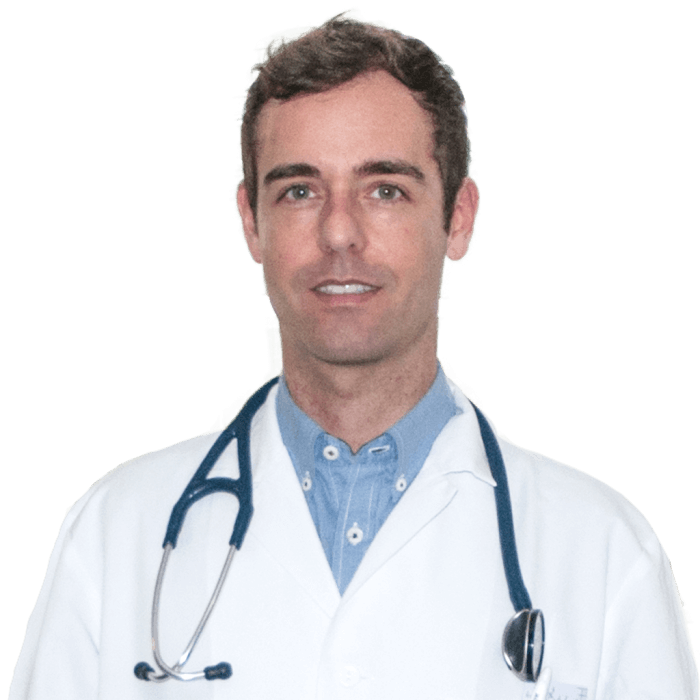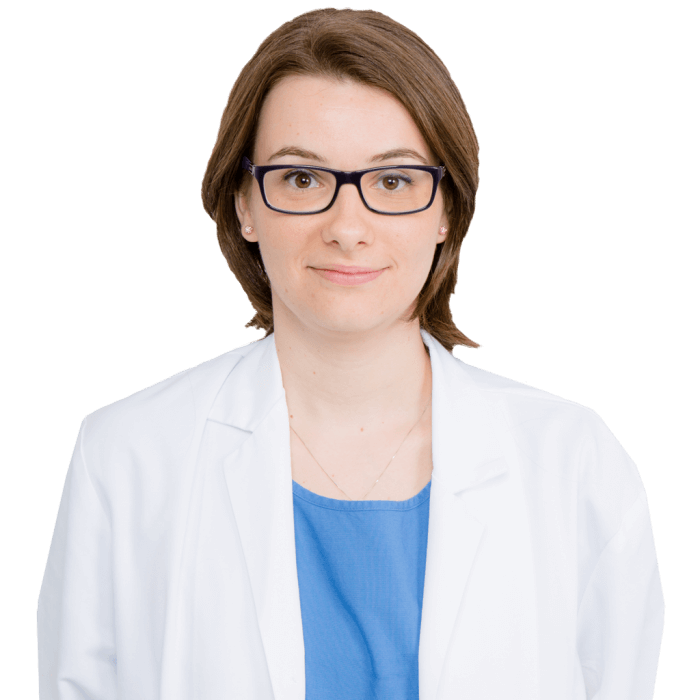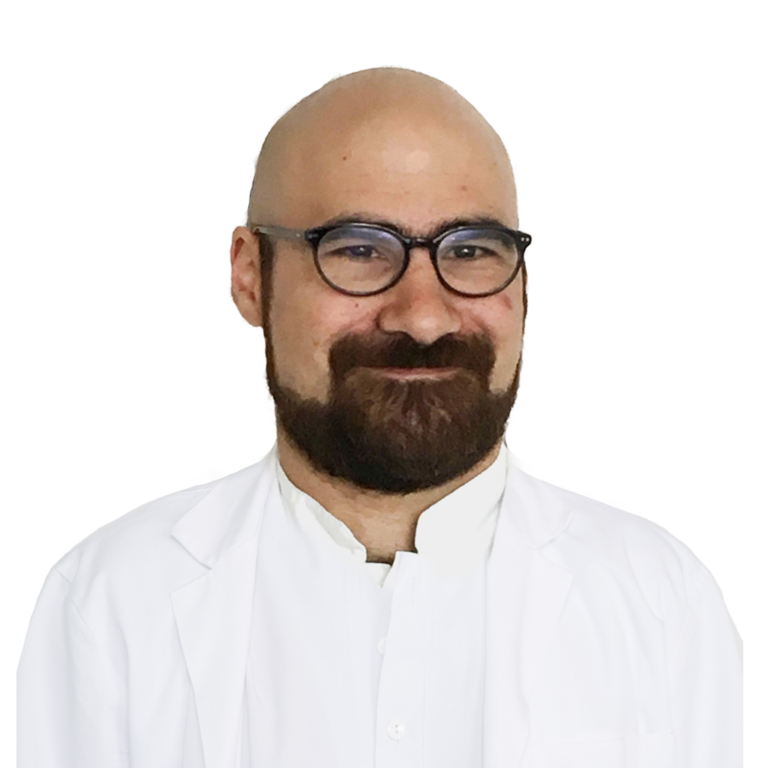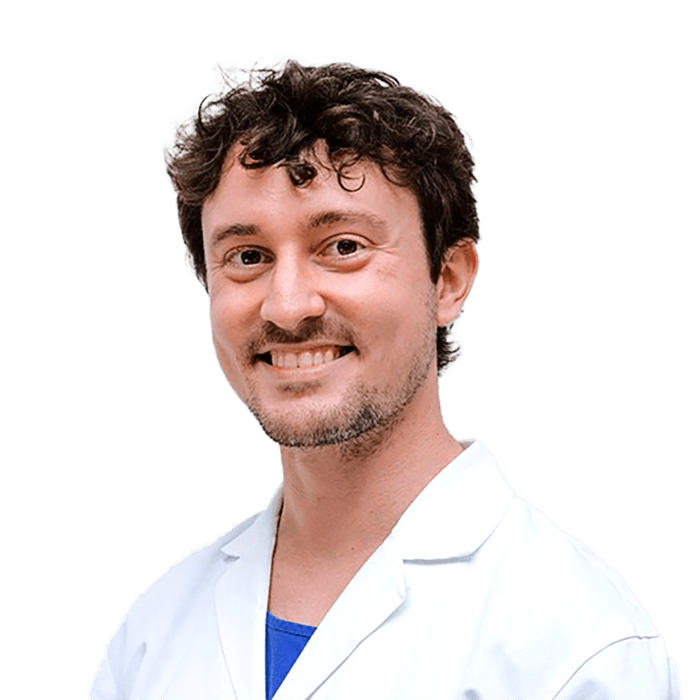Cardiac electrophysiology and Pacing
Cardiac electrophysiology and Pacing
Electrophysiology (or arrhythmology) and pacing is a cardiology specialty dedicated to the prevention, diagnosis, and treatment of heart rhythm disorders. These disorders can present with a variety of symptoms, including palpitations, tachycardia (increased heart rate), bradycardia (decreased heart rate), dizziness, loss of consciousness (syncope), or in some cases, sudden cardiac death.
Fortunately, most heart rhythm disorders can be treated using implantable pacemakers or defibrillators (Electrostimulation or pacing), or through ablative techniques aimed at the permanent elimination of heart cells responsible for arrhythmias (Electrophysiology).
TEAM
![]()
![]()
We are also a reference and training center recognized and accredited by the European Heart Rhythm Association (EHRA).
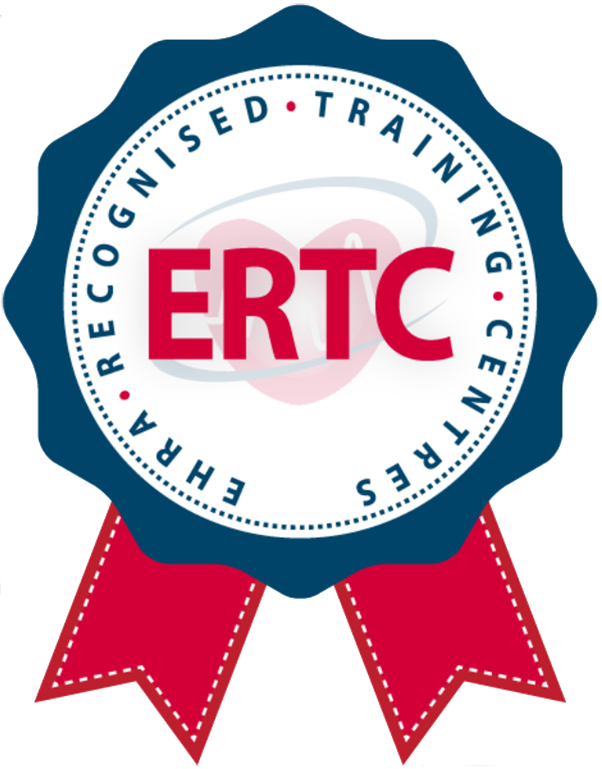
Our service is further involved in significant clinical studies and registers at both national and international levels. In collaboration with the Center for Computational Medicine of the University of Italian Switzerland (research section), we develop innovative computer models for personalized simulation of arrhythmic disorders and alterations of cardiac conduction, aiming to improve the treatment of such conditions. The Service of Cardiac Electrophysiology and Electrostimulation consists of:
Outpatient Section
In our outpatient clinic, we offer a range of specialized services for the treatment of heart rhythm disorders, including:
• Interrogation and optimization of advanced stimulation devices, such as implantable pacemakers and defibrillators (ICD), biventricular pacemaker/defibrillators for cardiac resynchronization, and leadless pacemakers.
• Three electrophysiology outpatient clinics, where we carry out the discussion, and follow-up of patients with heart rhythm disorders.
• A specialized unit for remote monitoring, which allows for the distant monitoring of the cardiac conditions of patients with implanted devices.
• A Holter and ECG reporting service for the diagnosis and monitoring of heart rhythm disorders.
• A clinic dedicated to patients with “rare diseases” and cardiomyopathies of genetic origin, with the possibility to perform specific genetic tests for accurate diagnosis and personalized management.The diagnostic and therapeutic path for the patient involves a thorough clinical evaluation in an outpatient setting. Through this evaluation, we aim to determine the most appropriate therapeutic solution for the patient. In some cases, hospitalization may be necessary to perform specific examinations and potential targeted electrophysiological treatments.
Our goal is to offer personalized care, taking into account the needs and specific conditions of each patient. We are committed to providing an accurate diagnosis and effective treatment for arrhythmia-related conditions. Throughout the care pathway, we work closely with the patient to ensure adequate communication and active involvement in therapeutic decisions.
Interventional Section
– Electrophysiology: In our two electrophysiology rooms (one of which is hybrid), we employ the most sophisticated electroanatomic mapping systems available to conduct a wide range of cutting-edge electrophysiological procedures. Thanks to these latest generation technologies, we are able to obtain a detailed and accurate mapping of the heart’s electrical activity, allowing a highly personalized diagnosis and treatment for each patient. Our laboratories represent a benchmark in the field of research and innovation in cardiac electrophysiology, ensuring patients the highest level of care and optimal clinical results.
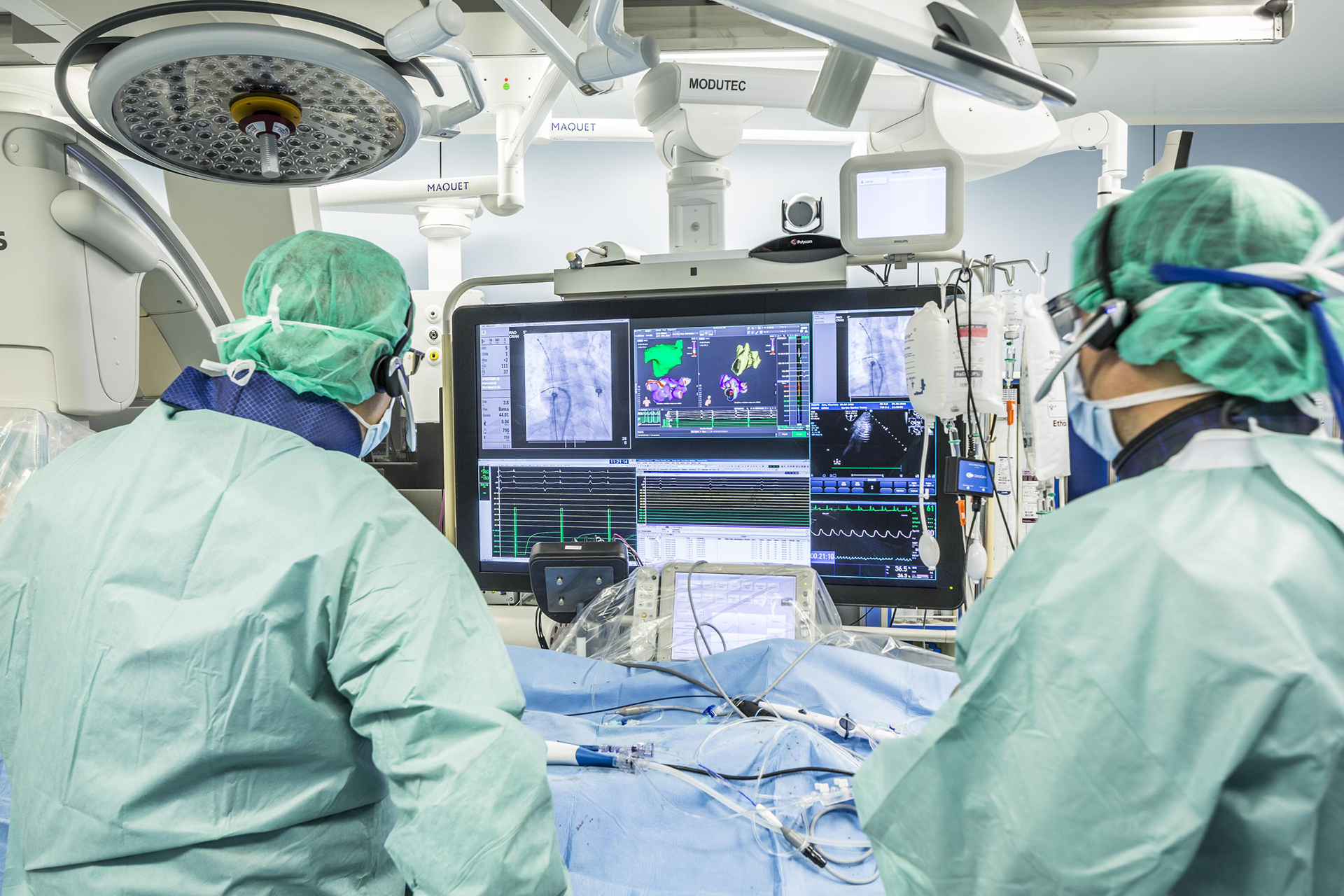
– Cardiac Pacing: Our service offers a wide range of solutions for a variety of cardiac arrhythmias, covering the entire spectrum of implantable devices. This includes single-chamber pacemakers for simpler cases of bradycardia, both with and without leads (leadless pacemakers), as well as advanced devices such as defibrillators (transvenous and subcutaneous) for the prevention of sudden cardiac death, and biventricular systems for heart resynchronization in patients suffering from heart failure.
The implants are performed in close collaboration with the Cardiothoracic Surgery and Anesthesia services in our three operating rooms, two of which are state-of-the-art hybrid rooms. In the case of elective pacemaker implantation, we can safely perform the procedures on an outpatient basis, unless there are conditions or comorbidities that require hospitalization. Moreover, we provide 24/7 coverage, 365 days a year for all urgent situations where a patient needs a pacemaker implant. Patients needing an evaluation for a device implant are welcomed into our dedicated clinic. We are extremely proud to offer a complete and cutting-edge service in the field of electrostimulation, with the main goal of improving the quality of life for our patients, providing them with the best available treatment options, personalized to their specific needs.
Exams and procedures offered
– Non-invasive diagnostics: electrocardiogram, ECG Holter up to 7 days, pharmacological provocation tests (e.g. ajmaline), tilt-test.
– Conventional electrophysiological study.
– Ablation procedures using radiofrequency with three-dimensional mapping.
– Cryoablation procedures.
– Implantation of permanent monitoring systems (implantable loop recorders).
– Implantation of pacemakers, defibrillators, and cardiac resynchronization devices.
– Implantation of “leadless” pacemakers and subcutaneous defibrillators (S-ICD).
– Extraction of malfunctioning or infected electrodes using laser extractors.
Our numbers
– We perform annually approximately 250-300 trans-catheter ablation procedures, including ablation of atrial fibrillation, atrial flutter, paroxysmal supraventricular tachycardias, ventricular extrasystole, and ventricular tachycardias.
– Each year, cardiac devices such as pacemakers, defibrillators, and cardiac resynchronization systems are implanted, with an average of 300 procedures per year.
– We perform about 120 replacements of implanted device generators due to battery depletion.
– We offer a wide range of advanced diagnostic investigations, including Ajmaline tests, Tilt Tests, and Loop Recorder implants for continuous and advanced monitoring of the heart rhythm (about 100 per year).
– Our team performs over 1500 electrophysiological visits and pacemaker and defibrillator checks to ensure careful management of arrhythmia conditions.
– We provide genetic counseling and support to over 200 patients with arrhythmia diseases of genetic origin.
– We perform over 1000 Holter exams per year for a thorough evaluation of cardiac electrical activity.
– Each day, approximately 650 patients are followed remotely through remote monitoring for personalized and continuous management of their cardiac conditions and careful management of their implanted devices.
Via Tesserete 48
CH-6900 Lugano
info.icct@eoc.ch
Secretariat
T. +41 (0) 91 811 53 96
Contact
Secretariat Prof. Dr. Giulio Conte
Mrs. Enrica Dasso
T. +41 (0) 91 811 53 63
Contact
Head of Service
Prof. Dr. Giulio Conte
Contact
Specialist doctor
PD Dr. Maria Luce Caputo
Contact
Senior Consultant Cardiologist
Dr. Marco Bergonti
Contact
Dr. Tardu Özkartal
Contact
Head Nurse
Mr. Raffaele Mautone
Contact


